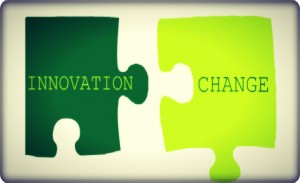I don’t know about you, but I’m so busy at work just trying to keep up with what we need to build and maintain existing systems for our customers, it’s hard to see what’s coming ahead even a year ahead of us. Projects I work on take months, even a couple of years to build and I’m working on many of them at a time. I’m very busy managing. I think this is the issue posed by Clayton Christensen about disruptive innovation. Organizations miss emerging technologies/opportunities beyond their horizon because they’re too busy trying to meet the demands of their current customers. I can definitely relate to this.
If I don’t read books, blog posts, tweets, collaborate with folks outside work, I don’t think I would even know about the larger issues and trends impacting higher education like MOOC, online learning, and student financial debt crisis. I work to satisfy the needs of our university students and our customers but I read/communicate outside my university work to keep up with larger issues.
In a way, my interactions/experience with my personal learning network (PLN) which consists of higher education professionals and those outside higher education are what I use to disrupt my day-to-day, localized thinking. There are many ideas, programs I would like to implement at work but the reality is that I first need to satisfy what our customers demand and need. Does that mean I don’t think about new ways to meeting these demands? I absolutely think about new/improved ways, but they cannot be disruptive to a point where what I do severely impacts how they serve their customers in the process. They are incremental improvements. I believe in the idea of learning through failing, but “failures” do cost resources and money so when we implement or try new programs, we better start out with some thoughtful approach and define what we need to accomplish, we just can’t be trying new things just for the sake of experimenting. After all, our salaries and resources we use come from students and their families.
So, I go back to the idea of using my PLN and my experience outside my work to explore new ideas, to dream beyond possibilities, and to disrupt my own thinking. I was in with a twitter conversation about technology and graduate programs earlier tonight that got me thinking about the future of student affairs profession. I write this post, I am looking at my Pebble smart watch and waiting for my invite for a Google Glass. I’m thinking about buying this Estimote Beacon and combine it with Leap Motion to experiment with the idea of geo-fencing in my home. These are wearable and sensor technologies that I can’t see us using at work anytime soon (though I think they’ll be as common as smart phones the way it is now). But, it does not mean I can’t dream about what it may be like a few years from now either and imagine a campus so different from what I see now.
